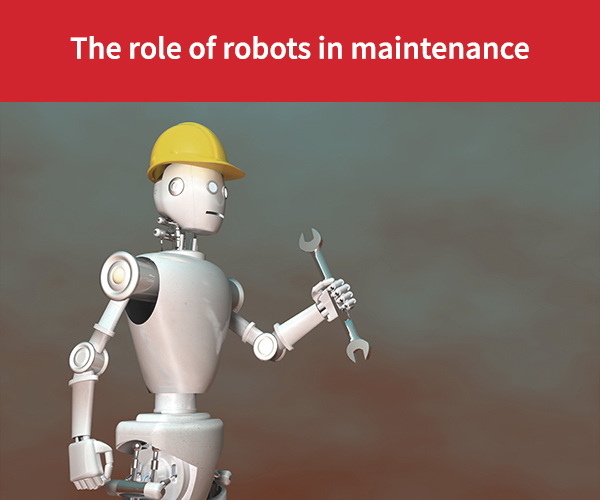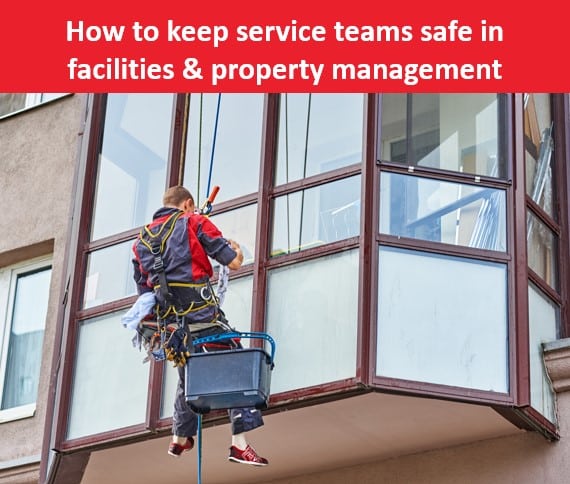- Productivity
- Maintenance
- Productivité
- Analytics
- Metrics
Tracking the Right Maintenance KPIs
Breakdowns and downtime affect the productivity and efficiency of almost every business activity. The bigger the business, and the more complex its infrastructure, the more ripple effects there are when a device or system fails. Today, new technologies such as connected objects make it possible to continuously “talk” to equipment, and to set up preventive maintenance, and even predictive maintenance, processes. Now, maintenance technicians can analyze the data sent by each connected device and step in to address issues before equipment fails. While the technology is not yet widely deployed, the role of “smart” equipment grows every day. With this new way of working, maintenance companies can implement service processes that are more fully integrated with their customers’ processes to reduce the impact of maintenance activities on production volumes and company operations.
The Internet of Things and data analysis become the framework for managing maintenance activities
Field service management software allows maintenance companies to create more accurate and efficient service schedules. The advent and growth of new technologies such as the Internet of Things (IoT) and data analysis based on “big data” allows maintenance companies to evolve from offering passive, corrective maintenance to offering new forms of proactive maintenance.
Smart, talkative equipment
With proactive maintenance, service technicians can use probability calculations that are based on analysis of the continual stream of data transmitted by connected equipment to step in just before failures occur. The emergence of cloud technology helps to advance new forms of maintenance by enabling large volumes of data to be easily stored in the cloud and used in algorithmic calculations. These calculations can identify trends and determine the likelihood of failures on each type of equipment. What seemed like science fiction a few years ago is now part of the professional landscape for maintenance companies.
Rapid IoT development in maintenance
New service models are quickly gaining traction because everyone wins:
-
Maintenance companies can evolve to more precise and profitable operations centered around fully justified actions
-
Their customers experience fewer operational obstructions and slowdowns due to untimely equipment breakdowns
-
You can bet that in the next 10 years, the numbers of connected equipment will explode and almost all maintenance companies will be equipped with field service management software and the technologies
-
needed to manage preventive, even predictive, maintenance operations.
Key performance indicators to optimize maintenance
As maintenance companies move to take advantage of technology innovations, they’ll have to quickly develop a set of key performance indicators that allows them to track the ongoing operation of the equipment in each of their customers’ fleets. After all, each customer dreams of equipment fleets that operate for their maximum lifespan with minimal repair, maintenance or upgrade costs. With connected equipment and the ability to intelligently analyze the huge volumes of data that’s generated, maintenance companies can track key performance indicators (KPIs) that allow them to manage their activities in faster and more precise ways Here are a few KPIs worth tracking:
Average recovery time
This is the average recovery time after an equipment failure. This KPI tells maintenance companies the average amount of time needed to detect and isolate a fault, and to replace the defective part. It’s typically used to determine the overall availability of equipment so the goal is to have the lowest possible value for this KPI.
Average failure time
The average failure time is the time required to repair faulty equipment after a failure. Unlike the average recovery time, the average failure time includes the entire duration of repair and maintenance operations as well as delays due to slow parts deliveries, parts replacement times and unsuccessful attempts to execute the repair outside of scheduled maintenance activities. Because equipment is not operational during the average failure time, this KPI should also have the lowest possible value.
Overall equipment efficiency
The overall equipment efficiency KPI identifies trends related to the productivity and value added by a particular piece of equipment or a fleet of equipment. It also identifies unexpected productivity drops and value losses when equipment is operational and there are no scheduled stoppages such as planned maintenance periods or weekend shutdowns. The key factors to consider when calculating overall equipment efficiency are availability, service and quality. As a result, this KPI must be tailored for each customer’s business and operations as it is difficult to establish generic levels and thresholds that make sense for all companies.
Identifying the essential indicators for your maintenance operations
KPIs are becoming increasingly important in business management as well as in technical and maintenance industries because they reveal numerous opportunities to improve performance. And it’s all made possible by recent advances in data analysis. By tracking the right KPIs, maintenance companies can identify areas where they have the potential to improve the productivity and efficiency of maintenance processes as well as areas where they have the potential to reduce the operating costs for a company’s technical equipment. Every business owner should be turning their full attention to KPIs. Maintenance companies and their customers can find more information on KPIs in European standards such as DIN EN 15341 (on performance indicators for maintenance) or DIN 31051 (on the principles of maintenance).
Maintainability or “maintenance by design” takes the requirements of maintenance technicians into account when equipment is being designed to ensure the design is optimized to reduce maintenance time and costs.
Unfortunately, maintenance requirements are often only considered at the end of the process, after equipment has already been designed and installed. At that point, maintenance teams are brought in to service the equipment, but they had no opportunity to provide input into maintenance requirements.
The problem is that equipment designers often think they understand the constraints and requirements of the people who will operate and maintain the equipment and don’t bother getting their input. But, they’re wrong.
The maintainability concept reverses the order things happen and allows maintenance teams to provide their thoughts on various design choices. For example, can maintenance technicians easily access a subsystem, disassemble it, and put it back together again?
By definition, maintainability is the ability to service equipment, in a given time period, at a lower cost and under specified conditions. When maintenance is complete, the equipment must be as reliable as it was when it was first installed.
The AFNOR X 60-500 standard that was cancelled this summer referred to the ability of an entity to be maintained or re-established, in a given period of time, in a state in which it can perform a required function, when maintenance is performed under given conditions, with prescribed procedures and means.
User experience extends to maintenance technicians
The principle of “maintenance by design” is a bit like the concept of “privacy by design” in the European General Data Protection Regulation (GDPR) and the concept of “security by design”, which considers potential system vulnerabilities from the moment the system is conceived.
Product design must consider the user experience (UX) by providing an ergonomic user interface that’s intuitive and flows logically. Maintenance technicians also need a user-friendly experience when executing their tasks.
At a time when the virtuous principles of sustainable development are overtaking the idea of planned obsolescence, anything that can be done to extend equipment life contributes to the user experience.
Maintenance is costly
Economics are also part of the picture. Anytime optimizing maintenance reduces the time and cost to service equipment, it’s a good thing. This is particularly true in industries where shutting down a production line results in lost time, lost revenue, and lost credibility with customers.
In aeronautics, maintenance is the biggest expense after fuel. According to a study by the International Air Transport Association (IATA), the average cost of maintenance for an airline is about $1070.00 per flight hour.
Maintainability affects all aspects of a system
Maintainability starts by choosing robust, reliable and durable system components. Other factors to consider include how easy it is to access wear parts and whether there’s a standardized and reliable way to obtain spare parts. Maintainability can also include the idea of equipment operating below its peak capabilities in a degraded mode of operation.
Documentation, including technical drawings and user manuals are also essential. Ideally, these should be written when the equipment is being designed and the project team is fully engaged. Otherwise, there’s a risk they will be sloppily written at the last minute.
Similarly, preventive maintenance operations should be formalized in maintenance manuals to ensure this information is captured. The information must include how often maintenance tasks should be performed, by whom, and in what way.
Virtual reality enhances maintenance by design
Digital simulation is another good way to facilitate maintenance by design, especially technologies such as virtual reality and augmented reality. When immersed in these virtual worlds, maintenance technicians can explore every aspect of life-size prototypes in a much better way than if they’re just looking at a computer screen, even if that screen is showing a 3D image.
Once the product is available, these new immersive technologies can be used to help train maintenance technicians, which also helps with maintainability. Technicians can wear a virtual reality helmet to practice maintenance tasks as many times as needed with no fear of making mistakes. This practice allows them to be fully operational the first time they service equipment in the real world.
Virtual reality can also be used to simulate uncommon events, such as a fire, a power failure, and particular weather conditions such as darkness, rain, snowstorms or fog. No manual or trainer can prepare a technician for these types of events.
The Internet of Things provides feedback
The Internet of Things also plays a key role in maintainability. When a manufacturer includes sensors on its equipment, it knows exactly how customers are using the equipment without waiting for them to complain or return the equipment.
This feedback loop allows manufacturers to prepare their maintenance teams for predictable breakdowns and to make the required improvements in the next version of the equipment.
Measuring progress is essential
Along with putting all the right pieces in place to improve maintainability, it’s also important to measure progress by analyzing reliability levels. Reliability, Availability Maintainability, Security (RAMS) is based on a number of key indicators, including Mean Time To Repair (MTTR) and Mean Time Between Failures (MTBF)
The concepts associated with RAMS are interdependent. A manufacturer that’s trying to improve equipment maintainability may have to choose between compromising its reliability or making it less secure.
For example, a manufacturer might choose a modular design that facilitates maintenance with easily replaceable components, at the risk of weakening the overall assembly.
By analyzing Total Cost of Ownership (TCO), which encompasses the entire lifecycle of equipment, manufacturers can find the ideal compromises between reliability and maintainability.
Our similar articles.
-
- Maintenance
- Gestion d’interventions
- Technologies
Using maintenance robots
June 17, 2020 -
- Field Service Management
- Maintenance
- facility management
- property management
Safety reminders for facilities, repair, and property service teams
December 13, 2022 -
- Software
- Field Service Management
- Gestion d’interventions
- Productivité
- Analytics
How to streamline field service management
March 12, 2019


